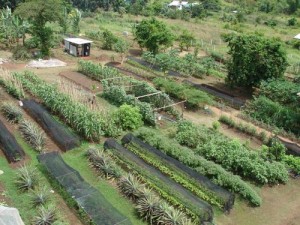You may think that just because you live in a desert region that you cannot enjoy your gardening hobby the way that you would like. However, desert vegetable gardening can be a very successful venture with the proper planning and preparation.
One of the benefits of growing vegetables in the desert is you can enjoy two growing seasons instead of the traditional single season that many other regions enjoy. The keys to successful desert gardening include timing and selection of your crops, as well as the proper location for your plants to grow.
Timing
 Since summer in the desert can be brutally hot and dry, this is usually not the ideal conditions for desert vegetable gardening. Instead, you can begin crops much earlier in the year, as long as it is after the last frost. To find out this specific date, you can contact your local extension office.
Since summer in the desert can be brutally hot and dry, this is usually not the ideal conditions for desert vegetable gardening. Instead, you can begin crops much earlier in the year, as long as it is after the last frost. To find out this specific date, you can contact your local extension office.
Keep in mind that frost dates will vary from desert region to region. Once the danger of frost is past, you can begin planting your garden. Likewise, once the hot summer sun cools somewhat, you can begin a second crop for the year, taking advantage of those crisper fall days and nights for your desert vegetable gardening.
Selection
Desert vegetable gardening, like gardening in other regions, requires that you choose your crops carefully to ensure that you grow varieties that will thrive in your conditions and climate. Again, the best source for this information is your local extension office or Master Gardener Club, but don’t rule out the neighbour down the street who always has extra harvest to share.
Gardening is also largely a matter of trial and error, since crops can vary from location to location, even within your own backyard. Keep in mind that no matter what you choose to plant in your desert vegetable gardening endeavour, your soil will probably need quite a bit of nutrition and treatment, since desert soil is rarely conducive to growing veggies.
Location
While most desert vegetable gardening should allow for full sun most of the day, there are some crops that will do well with partial shade conditions as well. For the most part, it is best to plant away from trees and shrubs that will not only shade the area but compete for water and nutrients as well.
The exception to this rule is to provide a wind barrier through the use of taller plants that can protect your garden during spring months when high winds can be a problem. Besides using plants as a wind barrier, you can opt for fences or walls as well.
With proper planning, desert vegetable gardening can be a fun hobby and a successful adventure. Good luck cultivating that green thumb!